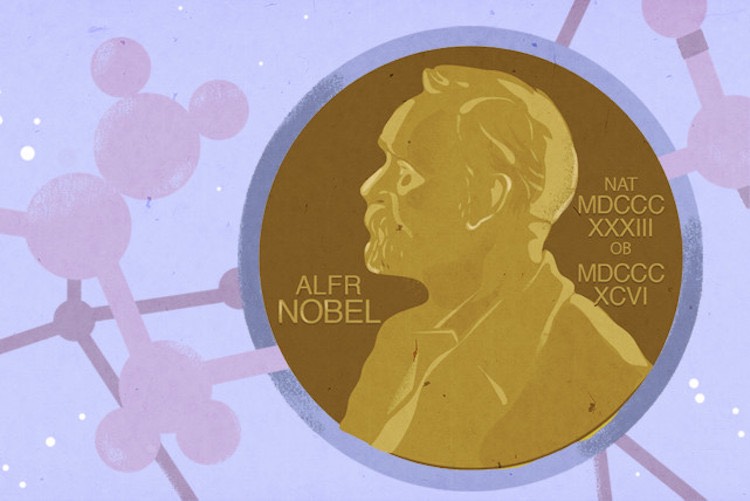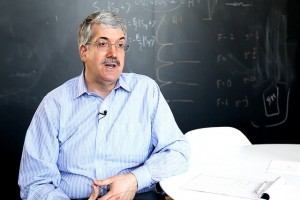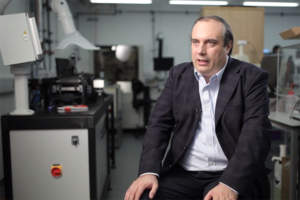Ultracold Molecules for Quantum Simulation
Phycisist John Doyle on travelling salesman problem, electric dipole moment, and laser cooling

In 2015 the Nobel Prize in Physics was divided between Prof. Takaaki Kajita and Prof. Arthur B. McDonald, both of whom were awarded “for the discovery of neutrino oscillations, which shows that neutrinos have mass”. We asked one of our authors, Professor Joseph Formaggio of the Massachusetts Institute of Technology, to comment on this piece of news.
In 2015, the Nobel Prize in Physics was awarded to two prominent physicists: Takaaki Kajita and Arthur B. McDonald. The two scientists were jointly awarded for, in the Nobel committee’s words, “the discovery of neutrino oscillations, which shows that neutrinos have mass.” Indeed, their discovery had a profound impact on our understanding of particle physics. In many ways, the discovery that neutrinos have mass is the first deviation from what particle physicists call “the Standard Model’’, and it may indeed open new doors into our understanding of how we structure the fundamental building blocks of Nature.
The discoveries of Art McDonald and Takaaki Kajita were born from the measurements carried out by large experiments and large teams of scientists — McDonald of the Sudbury Neutrino Observatory (SNO) in Canada, Kajita of the Super-Kamiokande (Super-K) experiment in Japan. Both experiments are enormous in size — Super-K with over 50,000
tonnes of water and SNO with over 1,000 tonnes of ultra-pure heavy water— and buried deep under the Earth’s surface. All this to get a glimpse of one of nature’s most fleeting particle, the neutrino. Both experiments collected data over a number of years in order to shed light on two of the most puzzling mysteries in physics at the time: the solar neutrino puzzle and the atmospheric neutrino problem. Their measurements helped resolve both mysteries with a common unifying answer; that neutrinos —previously thought as massless particles— indeed carried a finite mass.
Meanwhile, an equally perplexing mystery was taking place in observations of neutrinos created in Earth’s upper atmosphere. The Earth is constantly bombarded by very high energy cosmic rays (mainly hydrogen nuclei). As they hit the upper atmosphere, they create a cascade of secondary, unstable particles that eventually decay to, among other things, neutrinos. However, both the rate of these atmospheric neutrinos and their flavor composition did not match theoretical expectations. Despite the accuracy of the measurements, neutrinos were again deviating from predictions, leading to another perplexing puzzle for physicists to solve.
One possible explanation that could address both observations was that perhaps neutrinos were changing from one flavor to another (the experiments of Ray Davis and others were sensitive to only one type of neutrino). Such a phenomena, known as neutrino oscillations could potentially reconcile all the measurements to date. But such a proposition came at a heavy cost, for the Standard Model of particle physics demanded that neutrinos be massless particles. Neutrino oscillations can only occur if the different neutrino types have different masses, and hence imply that neutrinos are massive particles.
Enter stage right, the SNO and Super-K experiments, each able in their own way to definitively determine whether neutrino oscillations were taking place. By looking at neutrinos coming from different distances from their origin (either directly above their detector or all the way across the other side of the Earth), the Super-K experiment was able to measure the atmospheric neutrinos disappearing over distance —a key feature in oscillations. SNO, on the other hand, measured the appearance of neutrinos of different flavors coming from the sun (as designed, SNO’s heavy water target was sensitive to all neutrinos, regardless of their type). Indeed, SNO was able to confirm that the missing neutrinos from the sun were always there, and had only transformed from one type to another. Taken together, the scales tipped in favor for neutrinos undergoing oscillations and thus possessing a small but finite mass.
In the meantime, we celebrate the great discovery of Kajita and McDonald. Their pioneering work has brought us closer to understanding the inner works of particle physics. And, like all major discoveries, has inspired new questions for us to pursue for years to come.

Phycisist John Doyle on travelling salesman problem, electric dipole moment, and laser cooling

Nanotechnologist Andrea Ferrari on the perpendicular recording, diamond-like carbon, and magnetic storage

Physicist Paul Hartogh on primordial materials, escape of the atmosphere, and the Giotto mission